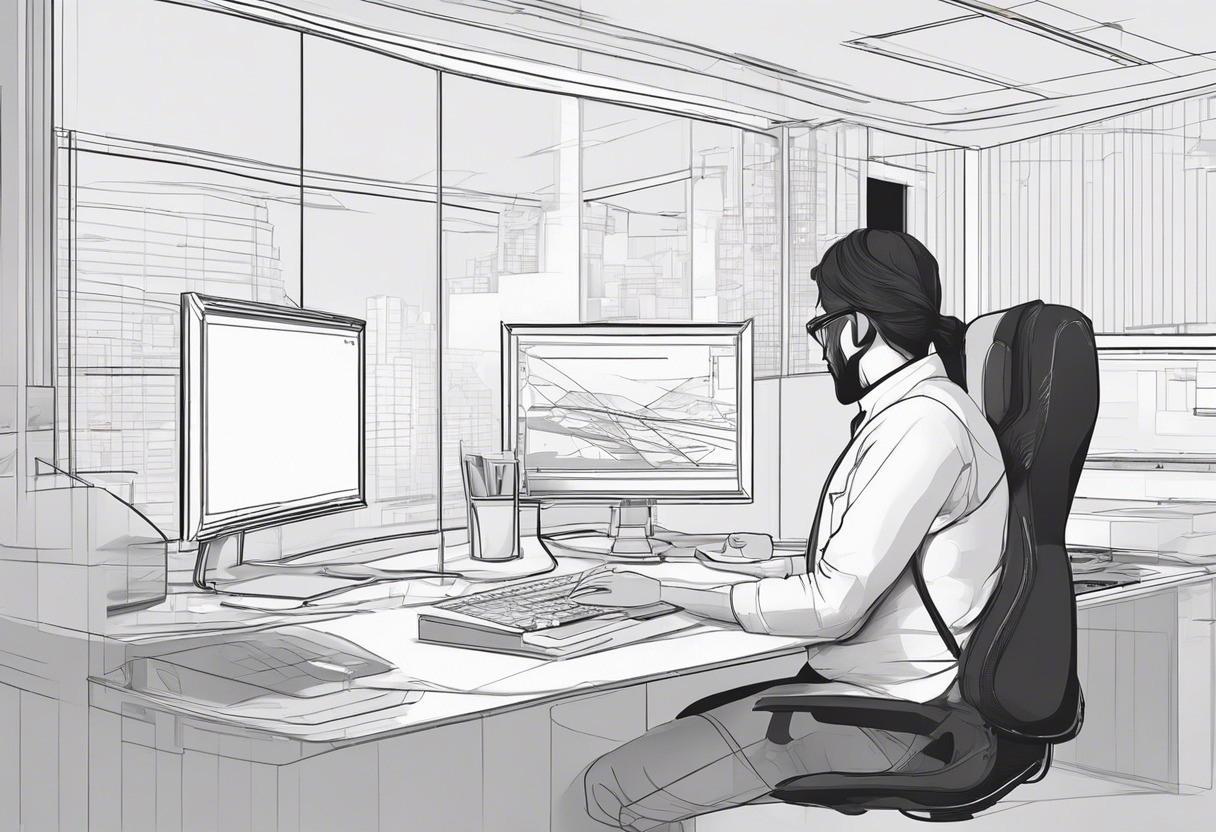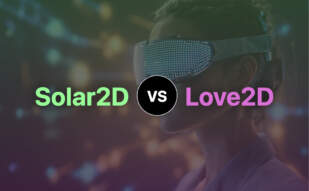For cross-platform mobile app development, amateurs to experts should turn to Solar2D. The language of games, Lua, powers this vibrant community-backed tool, offering supreme designing options and monetization. However, if you’re wedded to the Java ecosystem and desire granular control, opt for LibGDX.

Key Differences Between Solar2D and LibGDX
- Solar2D uses Lua as the primary development language while LibGDX uses Java.
- Solar2D provides a single code base applicable to variety of platforms, whereas LibGDX relies on platform-specific frameworks.
- Solar2D enables instant updates over local network through Live Builds, whereas LibGDX lacks a similar feature.
- LibGDX supports OpenGL ES 2.0/3.0 rendering, whereas Solar2D does not specify its rendering capabilities.
- Solar2D offers an easier entry point for beginners, while LibGDX offers fine-grained control beneficial for experienced developers.
- In Solar2D, users retain rights to source code, while it remains unclear in LibGDX.
| Comparison | Solar2D | LibGDX |
|---|---|---|
| Language | Lua | Java |
| First Release | December 2009 | Over 10 years ago |
| Platforms | iOS, Android, HTML5, Windows, Linux, MacOS | Windows, Linux, macOS, Android, iOS, Web |
| APIs | Over 1000 APIs, Lua layered on top of C++/OpenGL | Unified, OpenGL ES 2.0/3.0 |
| Dev Tools | Solar2D Simulator, Solar2D Native | Hiero, Particle Editor, fbx-conv project |
| Game Services Integ. | Monetization with integrated ad support | Google Play Games, Apple Game Center, Steamworks API, AdMob |
| Physics | Based on Lua, cross-platform through ANSI C | 2D physics – Box2D, 3D physics – Bullet physics |
| License | MIT | Apache 2.0 |
| Community Support | Extensive array of plugins, vibrant developer community | Large community support in forums, Discord server, Wiki tutorials |
What Is Solar2D and Who’s It For?
Spawned from the original Corona SDK, Solar2D is a cross-platform mobile application development tool that has been undergoing active enhancement for over 10 years. An apt choice for game enthusiasts, Solar2D permits the creation of applications for a vast range of devices including iOS, Android, desktops, and connected TVs. Solar2D features a Lua-based scripting language, a language in vogue for being lightweight yet potent.
Pros of Solar2D
- Competitive edge through unified codebase permitting cross-platform development
- Instant update Simulator enabling real-time testing
- Extensive resources and a supporting developer community
- Full ownership rights to source code
Cons of Solar2D
- Perhaps overly complex for absolute programming beginners
- Does not support 3D or VR development capacities
- Rely mainly on community for support and updates
What Is LibGDX and Who’s It For?
Gracing the Java game development field for more than 10 years, LibGDX is a comprehensive framework that combines power and control, being code-centric and hosting a wide array of features. Catering to developers familiar with Java environment, LibGDX underlines cross-platform development across Windows, Linux, macOS, Android, iOS, and the Web.
Pros of LibGDX
- Unified API for cross-platform targeting
- A mature, reliable framework with detailed documentation
- Provides a spectrum of audio, graphic, and UI features
- Compatible with a vast number of third party applications
Cons of LibGDX
- The learning curve might be steep for novice developers
- Extensive feature list could lead to complexity
- Reliant on Java knowledge
Solar2D vs LibGDX: Pricing
Both Solar2D and LibGDX offer robust capabilities for game and app development without incurring any direct monetary costs.
Solar2D
Solar2D operates under an open-source, MIT license. This promotes significant cost efficiency by ensuring developers can access and manipulate the platform without encountering hidden fees or royalties. The benefit of operating in an open-source environment is the right to retain the source code. Essentially, Solar2D is 100% free to use.
LibGDX
LibGDX, an established Java game development framework, operates under the Apache 2.0 License, meaning it’s open source and free to use. Its big draw includes access to a vast array of extensive features and third-party ecosystems at no cost. The lack of a price tag coupled with the exhaustive resources make LibGDX a highly cost-effective choice for developers.
Code Examples for Solar2D & LibGDX
Solar2D
The following code snippet demonstrates a simple yet delightful splash screen built in Solar2D (formerly Corona SDK). The splash screen is a quintessential element to every mobile game, providing personality and setting the mood for the game. Make sure you have Solar2D installed version 3597 or newer, along with Lua 5.1 above.
--Define splash screen image
local splashScreen = display.newImageRect( "splash.png", 1280, 720 )
splashScreen.x = display.contentCenterX
splashScreen.y = display.contentCenterY
--Fade out the splash screen
local function removeSplashScreen()
transition.fadeOut( splashScreen, { time=3000 } )
end
-- call the removal function after 3 secs
timer.performWithDelay( 3000, removeSplashScreen )
LibGDX
This LibGDX code snippet illustrates a basic interactive button in a 2D game. Useful for designing menu interfaces which may include, start, settings, help, and quit buttons. Ensure you have LibGDX 1.9.10 or above, along with a working version of Java 8 or newer.
import com.badlogic.gdx.ApplicationAdapter;
import com.badlogic.gdx.Gdx;
import com.badlogic.gdx.scenes.scene2d.Stage;
import com.badlogic.gdx.scenes.scene2d.ui.TextButton;
import com.badlogic.gdx.scenes.scene2d.ui.TextButton.TextButtonStyle;
public class MyGdxGame extends ApplicationAdapter {
Stage stage;
TextButton button;
TextButtonStyle style;
@Override
public void create() {
stage = new Stage();
Gdx.input.setInputProcessor(stage);
style = new TextButtonStyle();
style.font = new BitmapFont();
button = new TextButton("Start Game", style);
stage.addActor(button);
}
@Override
public void render() {
Gdx.gl.glClear(GL20.GL_COLOR_BUFFER_BIT);
stage.act(Gdx.graphics.getDeltaTime());
stage.draw();
}
@Override
public void dispose() {
stage.dispose();
}
}
What’s the Verdict? Solar2D or LibGDX?
In the tech world’s hunger games, only one can claim the crown. Let’s dissect who wins the Solar2D vs LibGDX duel for various audience segments.
Game Makers On A Budget
Solar2D should resonate with you like a symphony. It’s 100% free with no hidden fees or attachments. Its success doesn’t mean you need to part ways with your profits.

Java Purists
If you preach the sermon of Java, join the LibGDX congregation. It leverages the Java ecosystem and provides a reliable foundation and documentation.

Design-Focused Developers
For the artist in you, Solar2D shouts your name. With its design emphasis, vibrant community, and versatile options, it’s a canvas ready for your masterpiece.

Rapid App Builders
If time equals money for you, opt for Solar2D. The integrated simulator fosters rapid development by giving instant previews of app functionality on devices

If fine-grained control makes your heart beat, trumpet the tune of LibGDX. It’s code-centric ethos grants you full control over the reigns of your game’s development.

If you treasure free, time-efficient app development with a design focus, Solar2D calls your name. For Java disciples desiring fine-grained control, the beacon of LibGDX shines brightly.
Tiffany Brise
Content writer @ Aircada, patiently awaiting a consumer AR headset that doesn’t suck.





